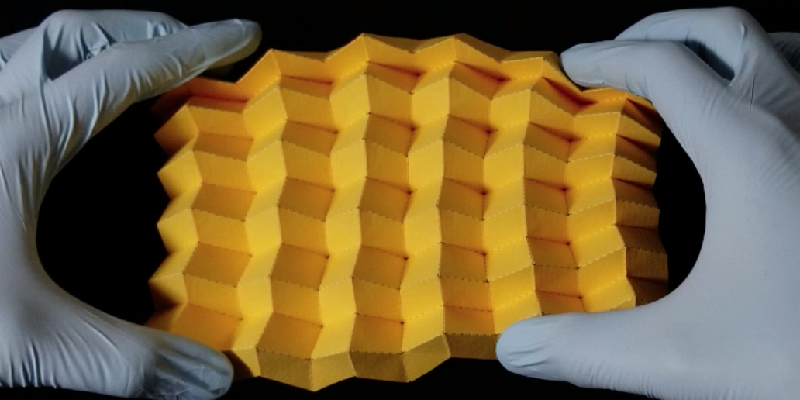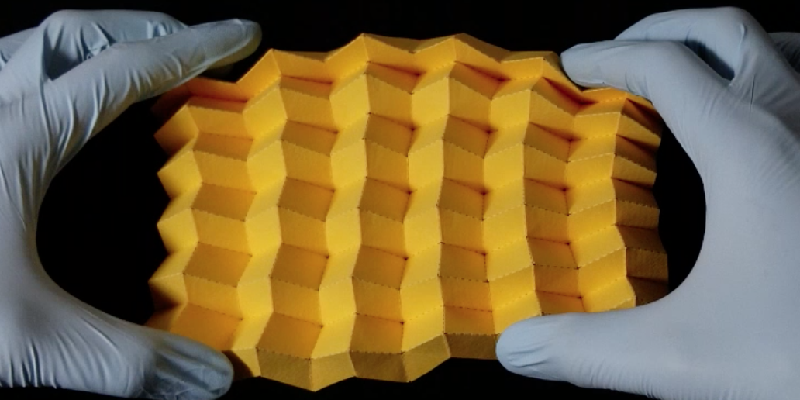Video—Tunable Origami
Origami is not just for making paper sculptures; engineers are developing origami-inspired structures that unfold in outer space and inside blood vessels. Now researchers led by Glaucio Paulino of the Georgia Institute of Technology in Atlanta have demonstrated a new folding pattern that produces a 2D material whose mechanical properties can be tuned over a wide range. The periodic folding pattern consists of a network of creases, some of which can produce either a “mountain ridge” or a “valley,” depending on which way they fold. Switching a crease from mountain to valley causes a change in the material’s so-called Poisson’s ratio, which describes the degree to which stretching a material along one direction will cause it to shrink along the perpendicular direction. The researchers could enact a wholesale switch to all the reversible creases, transforming the material from a positive Poisson ratio (called eggbox mode) to a negative ratio (Miura mode). Or they could perform switches in selected rows in the pattern, which produces a hybrid fold.
Hybrid folds could lead to structures with a new level of versatility, says Paulino. For example, some concert halls have adjustable, origami-based acoustic structures for controlling sound projection. With a wider variety of configurations, such structures could provide a more customized musical experience. Paulino is also interested in designing an origami-based drone crash protection system that could be modified according to the flight conditions.
This research is published in Physical Review Letters.
–David Ehrenstein
David Ehrenstein is a Senior Editor for Physics Magazine.





